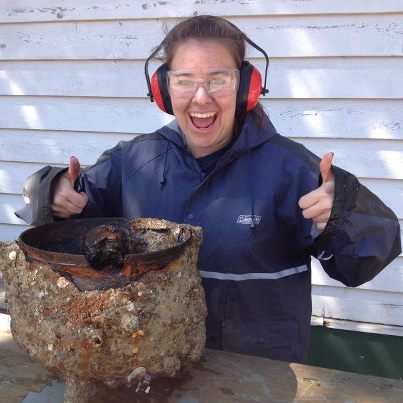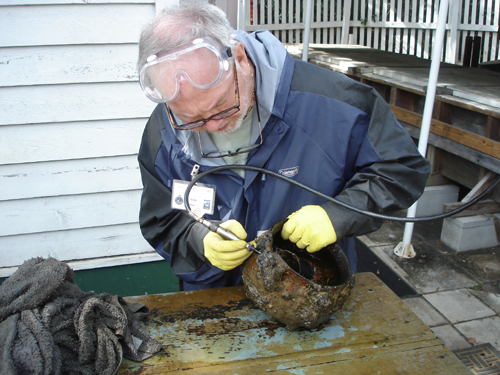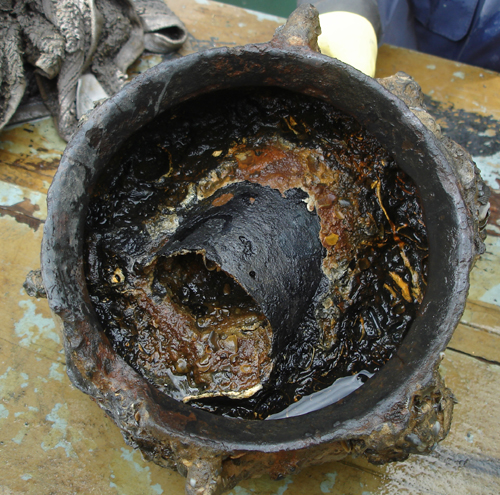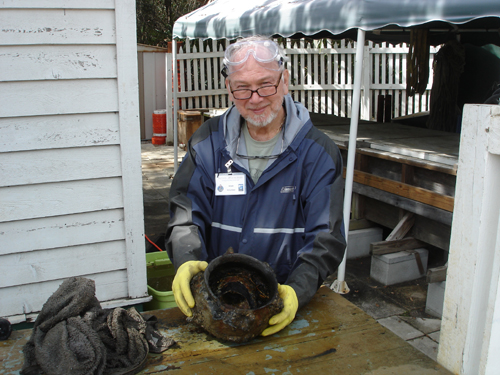
One of our favorite students, Maggie Burkett, has returned to St. Augustine while on Spring Break from her undergraduate studies at Juniata Collage. Like most college students, she has decided to forgo beer and beaches on her Spring Break to come to LAMP to clean shipwreck artifacts in the laboratory! Ok, maybe she’s not like most students. But we are glad to have her, even for a day, and her efforts have helped us move closer to the conservation of this iron cauldron recovered from the Storm Wreck, a British shipwreck lost off St. Augustine in December 1782.
Maggie hasn’t been our only volunteer working on artifact cleaning for us this spring . . .
As they say, it takes a village. In our case, a village of retired volunteers and college students, willing to give their time and effort (and to get dirty) helping us unearth and preserve history by cleaning centuries of encrustation off shipwrecked artifacts. Local volunteer Ed Coward has conducted airscribing for us, finishing the cleaning of the largest cauldron from the shipwreck back in the fall. Our unofficial fifth LAMP team member, Brian McNamara, has also put in lots of time on cauldrons and tea kettles, and just yesterday was cleaning a pewter plate. One of our favorite UNF students Jessica Bunke has been coming in once a week to airscribe the cauldron that Maggie worked on today. And then there’s Wade . . .

We first met Wade last year when he volunteered for a week towards the end of our field season. Wade has volunteered on a number of archaeology projects before, and he came all the way from Kentucky to give us his time! He came out on the boat with us to help us raise a musket, and accompanied us for a beach survey in Ponte Vedra. He liked working with us so much he came back in late February and early March, to start the airscribing of a small cast iron cauldron (not the one Maggie has been working on, shown above).

Wade’s cauldron has turned out to be very interesting . . . Inside it there was another object, which appears to be a pewter cup, tankard, pitcher, or some other similar container. He also found a bone or wood button blank, a small disk that was wrapped in cloth to make a button. The cloth itself was preserved, and he carefully removed it from the outside of the cauldron, saving this rare treasure from the past!

Thank you to Ed, Brian, Jessica, Wade, and Maggie for taking on this dirty job! The sacrifices we make for science!
You can read more about our work cleaning cauldrons and other iron objects from the shipwreck here, here and here.

